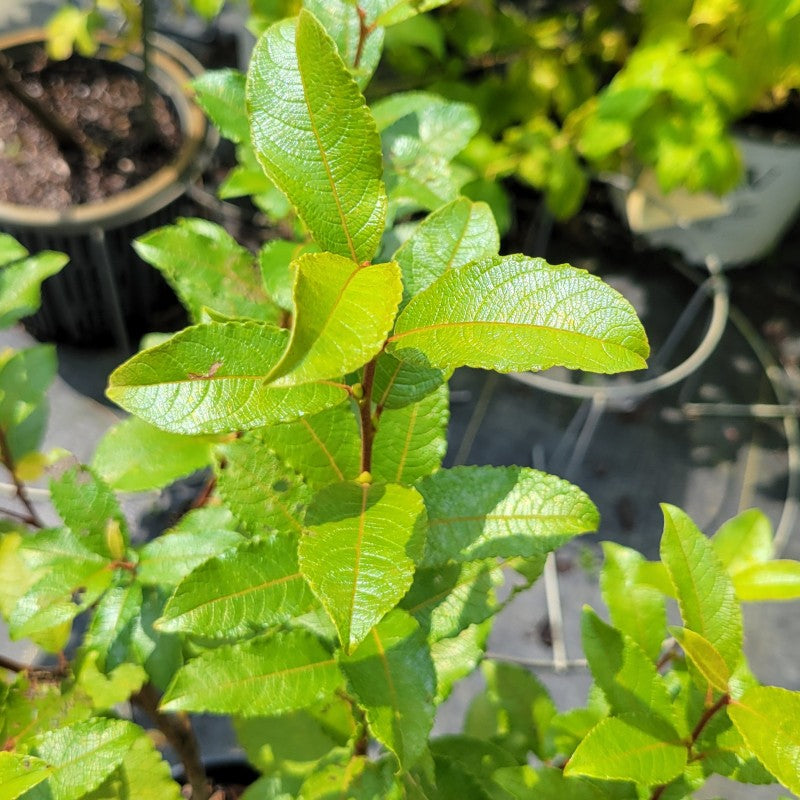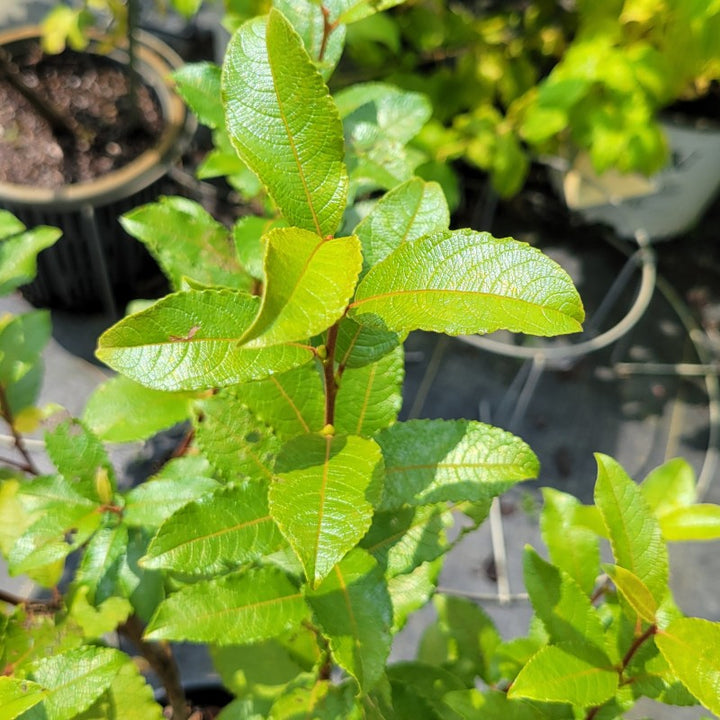Salix discolor (Pussy Willow) Unity Grown
- Low stock - 7 items left
- Inventory on the way
Salix discolor, also commonly called pussy willow, is a suckering deciduous shrub found in a number of wetter areas throughout much of the contiguous United States and Canada. Well known for its fuzzy, early spring flowers, common for winter cut flower arrangements, pussy willow typically grows to 4-15’ tall and wide. Especially common along stream banks and near other bodies of water, pussy willow typically grows as a shrub, but can occasionally grow to resemble a multi-trunked tree up to 30’ tall. After soft, silvery flowers bloom, providing pollen for a number of native bees, pussy willow’s glossy green leaves begin to open, and the plant serves as an important host plant for a number of larval butterfly and moth species, including the Eastern Tiger Swallowtail (Papilio glaucus) and Compton’s tortoiseshell butterflies (Nymphalis vaualbum), as well as the Cecropia Moth (Hyalophora cecropia), America’s largest native moth species.
As Salix discolor resembles other suckering shrubs found in floodplain areas (like Cornus amomum), it is easy to tell that pussy willow is an excellent choice for erosion control plantings, forming tangled roots and plenty of new growth season after season, both of which help hold onto soil in areas prone to erosion. Pussy willow’s appeal is not only limited to areas with wet soil, however, as the shrub will also tolerate a variety of conditions and occasional dry spells, making it an especially great choice for rain gardens. Though pussy willow’s root system is fairly shallow, it may still present an issue for surface drainage pipes and conduits, so care should be taken with choosing an appropriate planting location.






